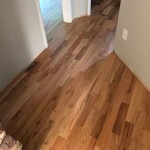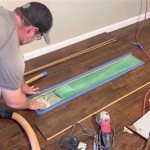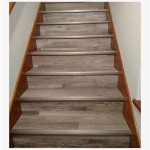All About Laminate Wood Flooring: A Comprehensive Guide
Laminate wood flooring is a popular choice for homeowners due to its affordability, durability, and versatility. As a synthetic flooring material made to resemble hardwood, it offers realistic wood looks while providing several benefits. To help you make an informed decision, this guide will delve into the essential aspects of laminate wood flooring.
Construction and Composition
Laminate flooring comprises multiple layers, each serving a specific purpose. The top layer, known as the wear layer, is made of a durable melamine resin that protects the floor from scratches and wear. Beneath it lies a decorative layer that mimics the look of real wood, followed by a core layer typically made of high-density fiberboard (HDF) or moisture-resistant medium-density fiberboard (MDF). The bottom layer, known as the balancing layer, provides stability and prevents warping.
Types of Laminate Wood Flooring
Laminate flooring comes in various styles and finishes. Popular options include:
- Traditional Laminate: Resembles the look of solid hardwood, featuring a single plank design.
- Wide Plank Laminate: Mimics the wide planks of engineered hardwood, creating a spacious feel.
- Distressed Laminate: Exhibits a weathered and aged appearance, ideal for rustic settings. li>Handscraped Laminate: Features a textured surface that mimics the imperfections of hand-scraped hardwood.
Benefits of Laminate Wood Flooring
Laminate flooring offers several advantages, including:
- Affordability: A more cost-effective alternative to hardwood or tile flooring.
- Durability: Resistant to scratches, dents, and fading, making it suitable for high-traffic areas.
- Easy Maintenance: Can be cleaned with a damp mop or vacuum, eliminating the need for waxing or polishing.
- Variety: Available in a wide range of styles, colors, and textures to match any décor.
However, it's important to note that laminate flooring has some limitations, such as:
- Not waterproof: Susceptible to water damage, making it unsuitable for bathrooms or laundry rooms.
- Limited lifespan: Has a shorter lifespan than hardwood or tile flooring, typically lasting 15-25 years.
- Can be noisy: Can create a hollow sound when walked on, especially if the subfloor is not properly prepared.
Installation and Maintenance
Laminate flooring is relatively easy to install, using a click-lock system that allows planks to be connected without the need for glue or nails. Professional installation is recommended to ensure proper alignment and prevent gaps or buckling. For maintenance, regular sweeping or vacuuming and occasional damp mopping with a non-abrasive cleaner will keep your laminate flooring looking its best.
Environmental Considerations
Laminate flooring can be an eco-friendly option as it is made from renewable materials, such as HDF or MDF. It also does not contain harmful chemicals, making it a safe choice for indoor environments.
Conclusion
Laminate wood flooring offers a cost-effective and versatile solution for homeowners seeking durability and style. While it has certain limitations, its many benefits, including affordability, easy maintenance, and variety, make it a popular choice for modern homes. By understanding the essential aspects of laminate wood flooring, you can make an informed decision on whether it is the right choice for your space.

Knowledge What Is Laminate Wood Flooring Interio Floors

Laminate Flooring Types And S Forbes Home

Engineered Flooring Vs Laminate Everything You Need To Know Forbes Home

Laminate Vs Hardwood Flooring Major Differences Forbes Home

2024 Laminate Flooring Trends 10 Stylish Ideas

Laminated Wood More Than Just A Flooring

What Is Laminate Flooring Know Cost Pros Cons Types Brands 2024
Laminate Flooring Wood Floors Floor Decor
Laminate Flooring Wood Floors Floor Decor

Types Of Laminate Flooring The Home
See Also







